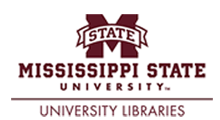
Theses and Dissertations
Issuing Body
Mississippi State University
Advisor
Wang, Haifeng
Committee Member
Marufuzzaman, Mohammad
Committee Member
Ford, David
Committee Member
Street, Jason
Committee Member
Ma, Junfeng
Date of Degree
8-7-2025
Original embargo terms
Visible MSU Only 1 year
Document Type
Dissertation - Campus Access Only
Major
Industrial and Systems Engineering
Degree Name
Doctor of Philosophy (Ph.D.)
College
James Worth Bagley College of Engineering
Department
Department of Industrial and Systems Engineering
Abstract
Reliable and efficient measurement of wood chip moisture content is crucial for forest-reliant industries, including biofuel production, pulp and paper manufacturing, and bio-refineries, as it directly influences product quality and energy output. Traditional methods like the oven-drying technique, despite their widespread use, are time-consuming and impractical for real-time applications, while modern alternatives such as NIR spectroscopy, electrical capacitance, and microwave analysis are often costly, less portable, and require specialized expertise. This dissertation addresses these limitations by leveraging deep learning and machine vision to develop a scalable, accurate, and portable method for moisture content measurement using RGB images of wood chips. A dataset of 1,600 images was collected and annotated based on ground truth data from oven-drying results. Using this dataset, two optimized neural networks, MoistNetLite and MoistNetMax, were developed through Neural Architecture Search (NAS) and hyperparameter optimization. MoistNetMax achieved a 91% accuracy, outperforming state-of-the-art models like ResNet152V2 by 9.6%, while MoistNetLite provided fast and efficient predictions suitable for deployment on portable devices such as smartphones. To enhance the robustness of predictions across domains, we integrated Kernel Fisher Discriminant Analysis. We developed a Bayesian Optimization strategy, ensuring a balance between feature transferability and discriminability, which led to superior performance across benchmark datasets. Furthermore, texture-based analysis using Haralick features was conducted to explore moisture content classification, validated by Local Interpretable Model-agnostic Explanations (LIME) to provide insights into model decision-making. Building on this, a framework called AdaptMoist was proposed by integrating five types of texture features with a domain-adversarial network and introducing a custom model selection strategy based on Adjusted Mutual Information (AMI). Finally, the work extends NAS to the domain adaptation setting. A novel NAS-driven Unsupervised Domain Adaptation (NAS-UDA) framework was introduced, incorporating a structured search space, a set of label-free proxy metrics, including a newly validated Hellinger distance, and an ensemble-based prediction strategy to improve robustness across domains. Collectively, this dissertation provides a unified, interpretable, and generalizable solution for wood chip moisture content prediction across varying operational conditions.
Sponsorship (Optional)
USDA-NIFA award no. 2020-67019-30772 and 2022-67022-37861
Recommended Citation
Rahman, Abdur, "Neural architecture search-driven unsupervised domain adaptation for enhanced wood chip quality evaluation in forest industries" (2025). Theses and Dissertations. 6693.
https://scholarsjunction.msstate.edu/td/6693


